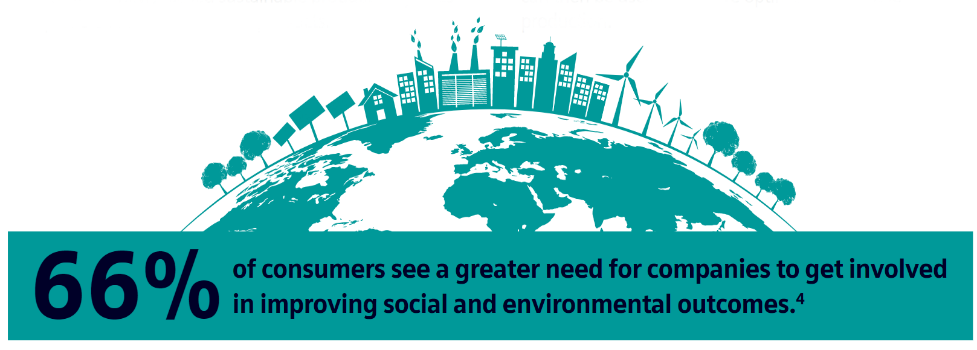Creating a sustainable future with circular economies

Consumers care about their impact on the planet
Consumers’ desire to purchase sustainable products has grown in recent years, fueled by social interactions, increased access to information, diverse product options, and imagination. They are becoming increasingly conscious about the difference they can make through their wallets. Consumers support companies with purposes of embracing social causes, providing transparency and aligning with their personal values. This highlights how consumers are driving the shift toward sustainability. Consumers also want an end to the current unsustainable, linear model of make, take and dispose. This has given way for brands to reexamine current practices and incorporate circular economy solutions.
What is a circular economy and how is it accomplished?
The circular economy is a concept with three principles: design-out waste and pollution, keep products and materials in use and regenerate natural systems. The circular economy is a concept companies can adapt if they wish to create a sustainable, waste-free future. Designing-out waste in the CPG industry involves eliminating emissions and material waste throughout the supply chain. This starts with decarbonizing manufacturing or using renewable energy to remove carbon dioxide from fossil fuels in manufacturing.
Design for sustainability
Another way to design-out waste is to keep products and materials in use. This can be done with re-use/refill or repairing and return-to-manufacturer programs to reduce long-term waste. This all paves the way for new business models to arise out of circular economy solutions. Implementing the circular economy is not exclusive to small companies. Large corporations like Unilever and Nestlé have begun experimenting with new business models by investing in a program that ships products to homes and collects them to later be refilled, helping keep waste out of landfills. Having a digital twin in production, or a digital representation of manufacturing production, is a beneficial way to see how materials can be re-used or repurposed. The digital twin can be used to understand what the bill-of-materials (BOM) is, which allows companies to discover how to re-use materials. Using a comprehensive digital twin is also beneficial to understand the structural integrity and material properties of the products. Then, simulation can be used to validate the quality of the new, reused sustainable products, is just as comparable to non-sustainable products.
It is also critical to address the large amount of wasted plastic to keep materials in use. Many top CPG companies have committed to making all their products re-usable, recyclable, or compostable by 2030. Although recyclable packaging is a step forward, only 8.7 percent of recyclable plastic is recycled, still creating large amounts of waste. To combat this issue, companies are innovating to find more solutions. Some companies are looking at creating invisible barcodes to make it easier for recycling facilities to sort plastics and increase the recycling rate. Biodegradable packaging is also becoming increasingly popular. Options such as mycelium from mushrooms and seaweed-based alternatives are taking center stage for their fast biodegradability.
Consumer goods manufactures must find ways to uphold quality while keeping up with consumer demands for sustainability
Consumers want sustainable options without compromising the overall quality of the product. Using design tools and simulation in product manufacturing could be a huge advancement toward sustainable products. For companies to uphold their commitment to sustainable products, it is essential to invest in material and new innovations. Investment in technology to create a comprehensive digital twin is being investigated by consumer products companies. Simulating what waste is produced, and the re-use of materials or carbon emissions would allow companies to see environmental impacts throughout the supply chain. Adopting such technologies allows manufacturers to achieve optimal, sustainable production.
Consumer manufacturers that invest in Smart Processes and Product Design are taking the journey from imagining to creating sustainable products that fit consumers’ needs.
Learn more about how Siemens can help you reach your companies sustainability goals here.



